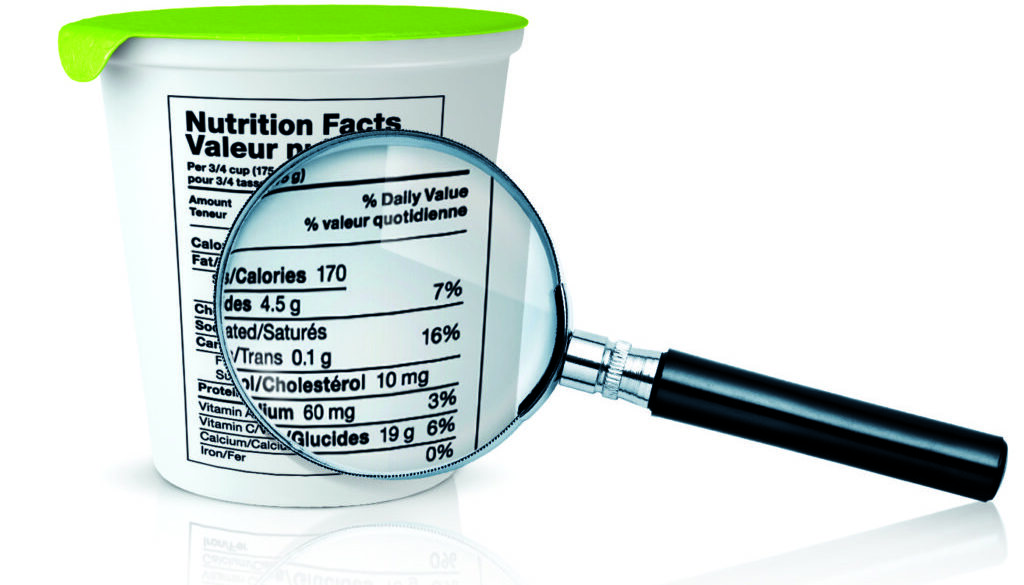Interpreting the nutrition label
Admit it, you’ve had a moment where you’re at the grocery store, walking down the baking aisle, looking for bread and you come across the cookie section. You try not to look because you’re trying to maintain the progress you’ve made with dieting and training. But you stop, curiosity hits you and you decide to read the nutrition label on that box of Oreo’s, just to find out what the damage actually is. You think to yourself, “Wait, only 100 calories! That’s not that bad…”, as you toss that box of oreos into your cart and move on, guilt free (at least for the moment).
One of the best ways to improve your health is by learning how to read a nutrition label. By understanding the value of the ingredients used, the serving sizes and the caloric breakdown of macronutrients, you’ll be able to make smarter choices when reaching for that next box of sugary snacks or anything else for that matter.
Ingredients list breakdown
One of the first steps you should take when reading a nutrition label is to take a look at the ingredients list. A good general rule of thumb to follow is the fewer ingredients, the better.
You should also read the list of ingredients. Ask yourself, “can I even properly pronounce some of these ingredients listed?”. If not, I would highly recommend researching what that ingredient is used for. Generally, the ingredients with harder pronunciations are used for preservatives to increase shelf life, keeping those products in the store and in your cabinets longer.
When reading the ingredients list, amounts used are listed from prominent to least. So if sugar, high fructose corn syrup, cane syrup or canola oils are listed first, you should probably put whatever you have in your hand, back on the shelf.
Don’t overlook the serving size
Understandably, most people only ever look at the calories listed. It’s usually the largest printed value on the label and in some cases, it’s even marketed on the front of product packaging.
Don’t be fooled by that number!
Instead, be sure to check the serving size first before throwing that product in your shopping cart. You’ll be surprised with how much you can actually have after reading the serving size.
Determining calories
It is important to understand where calorie values come from and how they’re factored, especially for individuals who track their macronutrient intake when dieting.
Macronutrients or macros, are a large collection of molecules that make up the food we eat. They are divided into three main groups; Fats, Proteins and Carbohydrates. Each of these macros contain energy units (aka calories), which when added together, account for total calories per serving.
On some nutrition labels, a caloric breakdown for each macronutrient can be listed. Each gram of fat is 9 calories; each gram of carbohydrates is 4 calories and each gram of protein is also 4 calories. You can easily calculate the total calories per serving, by multiplying the total grams per serving for fats, carbs and protein; by its caloric unit per gram. Try doing the math for yourself.
While the total calories calculated may not be 100% what is printed on the label, keep in mind that the total is generally rounded up and other factors such as fiber (which can reduce calorie totals), are also considered.
Summary and challenge
We understand that sometimes you just want a damn cookie, and that’s ok! If you’ve worked with us, you know how hard training can be and it’s ok to occasionally reward yourself for your efforts. With that said, here’s a challenge for you: Rather than reaching for those sugary snacks before bed, or when watching TV, consume those snacks during or immediately after a workout.
Think of sugars as an ally, as opposed to an enemy (we’ll discuss this some more in a future post).
The sugars in those snacks are fast metabolising and when combined with a post-workout protein shake, you can aid the delivery of protein to assist with repairing broken muscle fibers from a workout. Just be sure not to over eat and stick to one serving size of your snack of choice.

